ENEPIG (Electroless Nickel, Immersion Palladium, Immersion Gold) was derived out of the need to combat the challenge with the immersion gold process and Black Pad Syndrome. Black Pad (the hyper corrosion of underlying nickel) was baffling both PCB assemblers and manufacturers. After much analysis, the root cause was determined to be the nickel deposit.
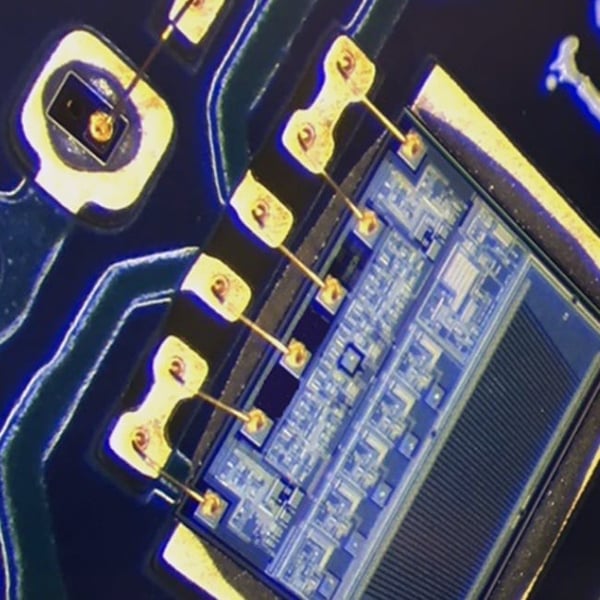
Magnification of PCB Showing Black Pad
What was causing the nickel to corrode at a high rate was still a mystery and while the industry moved to solve this, there was also a move to introduce a surface finish that could avoid the nickel issue. It was found that palladium acts as a diffusion barrier when deposited between the nickel and the gold. In other words, it allows the passage of the nickel electrons to the gold to continue the ion displacement with the gold and continued gold deposit but prevents the actual nickel to diffuse to the gold and bonding to its crystalline structure. This keeps the gold deposit pure and readily accommodating to wire bonding, a process not able to be performed on standard immersion gold.
However, before the benefits of ENEPIG be effectively marketed, the driving factor behind nickel and black pad was discovered (phosphorous). ENIG chemistries and processes were eventually fine-tuned to practically eliminate the black pad syndrome. The ENEPIG surface finish never gained any traction which is truly a shame, as it is still a superior finish to standard ENIG. Besides the ability to be a wire bondable surface finish, it also allows for a thicker deposit of gold as opposed to the standard ENIG which is self-limiting on the gold deposit.
Basically, when the surface of the nickel is completely covered by the gold deposit, ion displacement stops and the gold ceases to deposit. Gold measurements over 3 micro-inches is difficult to consistently maintain with standard ENIG and 4 or higher micro-inches cannot be considered. With ENEPIG, gold deposits as high as 6 to 7 micro-inches are easily processed due to the nature of the palladium barrier between the nickel and gold. One of our top customers who uses the ENEPIG surface finish for their wire bonding needs has been using the surface finish since 2012. Initially with this surface finish there were issues with dis-coloration, proper gold deposit thickness, and conformance to shape of pads. Since working with us, the finish has been consistent and functions flawlessly at assembly.
The ENEPIG Process
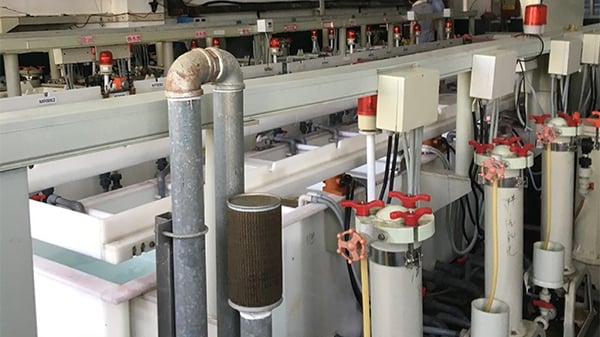
PCB Cleaning Line During ENEPIG Process
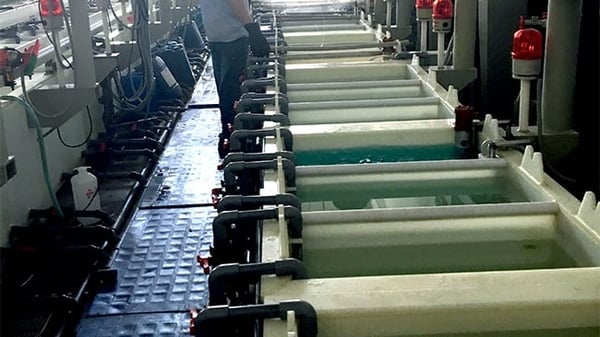
Aerial View of PCB Cleaning During ENEPIG Process
Cleaning
Before the application of any surface finish, the underlying copper must be thoroughly cleaned of any oils and contaminants from previous processes. These contaminants can impede the forthcoming processes such as micro-etching, and metal depositions.
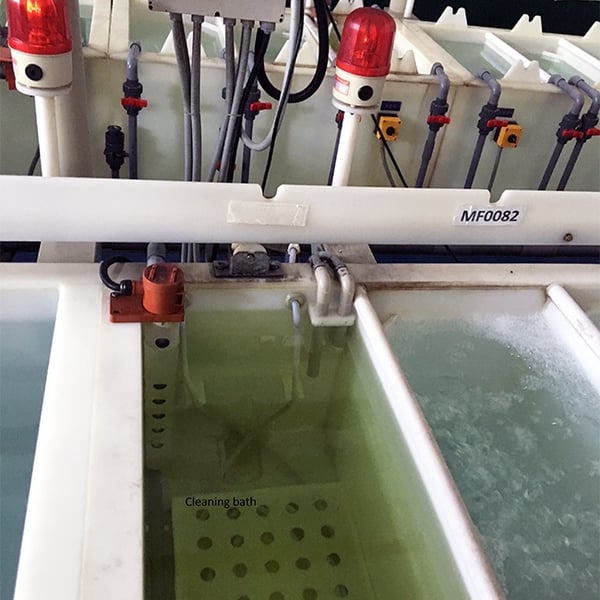
PCB Cleaning Before Application of Surface Finish
Micro-etching
The micro-etching step “roughens” up the copper surface so that the adhesion of deposited metals is strong and complete. This is achieved by removing a small amount of copper from the surface via an oxidizer-acid combination such as peroxide and sulfuric acid.
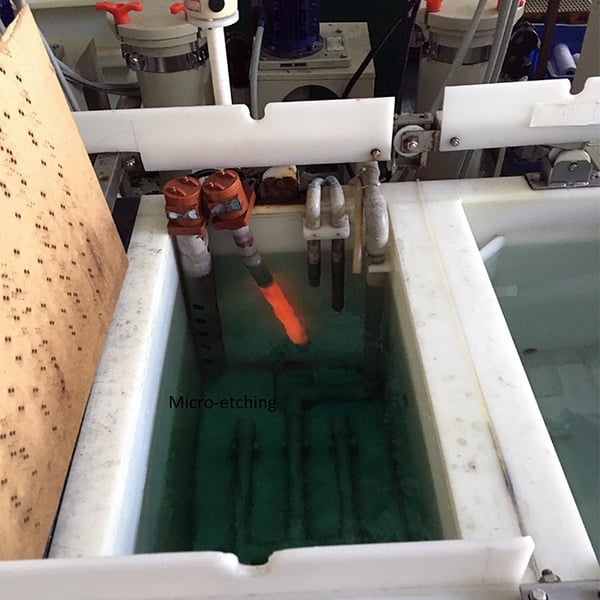
Printed Circuit Board During Micro-Etching Process
Catalyst
This step lightly coats each panel with a catalyst that attracts the nickel ions to bond with the copper.
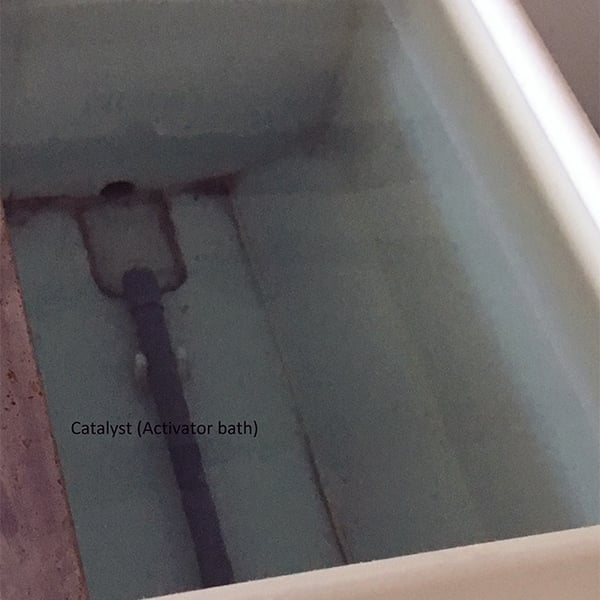
Catalyst Activator Bath in ENEPIG Process
Electroless Nickel
At this step, the required thickness of nickel is deposited on the part. The nickel bath is highly active and must be carefully monitored to maintain the balance and parameters of the nickel chemistries. As mentioned earlier, phosphorous control is extremely important.
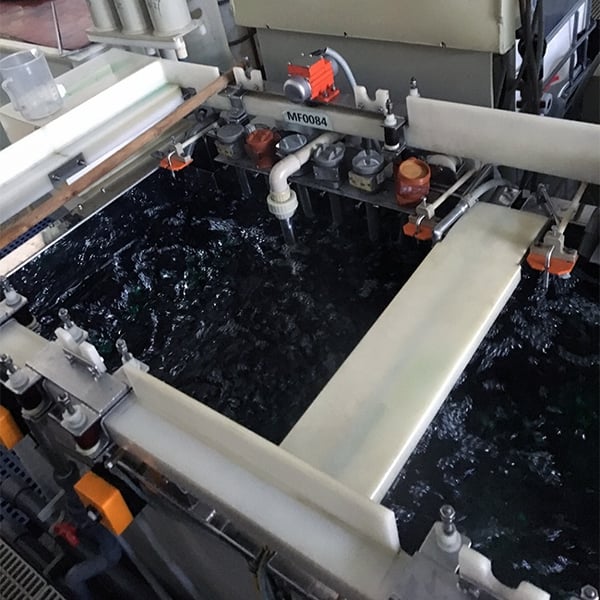
Electroless Nickel ENEPIG Process
Palladium Bath
The palladium diffusion barrier is now deposited onto the nickel surface through an electroless process. The unique diffusion properties of the palladium layer are due to the presence of phosphorous in the deposit. The phosphorous content is produced by a reducing agent. There are multiple possible reducing agents but Epec uses sodium hypophosphite for superior results.
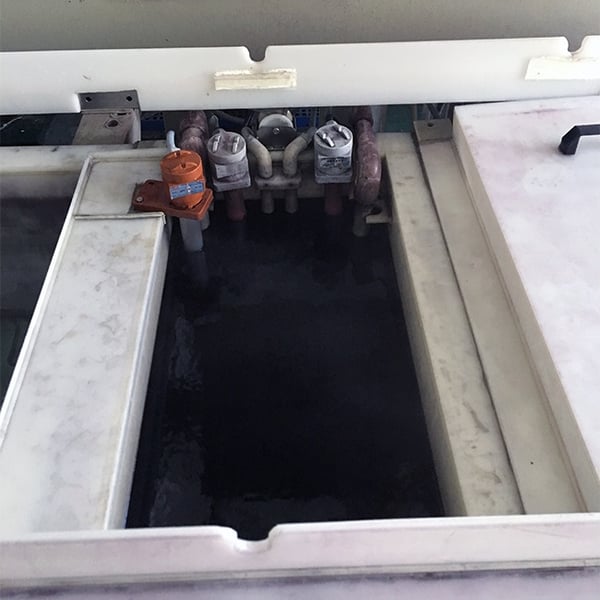
Palladium Bath During ENEPIG Process
Immersion Gold
At this step in the process, a thin layer of gold is deposited onto the fresh layer of electroless palladium. With standard ENIG, this layer of gold average 2-3 micro-inches, which tends to be self-limiting to the ratio of nickel ions to gold ions. With the diffusing layer of palladium, thicker deposits of gold are attainable to specifically aid in the wire bonding process. The gold ions are kept in solution via arsenic, which is a toxic hazard solution.
If you are having challenges with your current ENIG surface finish or are looking for cost savings to wire bondable hard gold, then the superior results of ENEPIG should be considered.
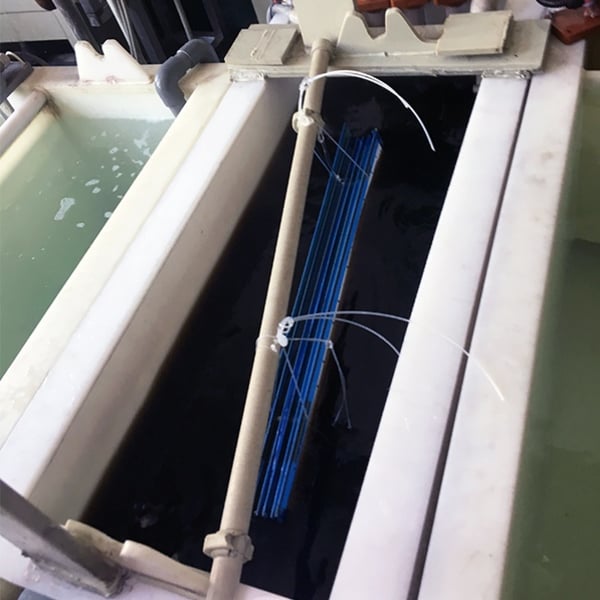
Immersion Gold Stage of ENEPIG Process

Final Steps
The final steps included multiple rinses, drying, and final inspection. Complete drying is a necessity as the presence of any moisture on the gold surface can lead to spotting and oxidation on the shipped product. Final inspection consists of visual cosmetic inspection and X-ray measurements to determine the thickness of the nickel, palladium, and gold.
Summary
ENEPIG (Electroless Nickel, Electroless Palladium, Immersion Gold) was developed to overcome the issues caused by Black Pad Syndrome in ENIG finishes, where nickel corrosion compromised solderability and reliability. By adding a palladium diffusion barrier between nickel and gold, ENEPIG prevents nickel migration, ensures a purer gold layer, and enables reliable wire bonding. Although ENIG was later improved to mitigate Black Pad issues, ENEPIG remains a superior option due to its ability to achieve thicker, more consistent gold deposits and enhanced assembly performance. The process involves several steps, including cleaning, micro-etching, catalyst coating, nickel and palladium deposition, immersion gold, rinsing, and inspection, all of which are critical to producing a stable and wire bondable finish.
Key Takeaways
- ENEPIG prevents Black Pad Syndrome by using palladium as a diffusion barrier, eliminating nickel migration issues and maintaining gold purity.
- Wire bonding is possible with ENEPIG because the palladium layer supports thicker gold deposits, achieving 6-7 micro-inches compared to ENIG’s self-limiting 2-3 micro-inches.
- The process is multi-step and includes cleaning, micro-etching, catalyst application, electroless nickel, palladium deposition, immersion gold, and final inspection.
- Quality depends on process control, especially with nickel and phosphorous content, which must be monitored closely to ensure consistent results.
- ENEPIG is a strong alternative to ENIG or hard gold plating, particularly for applications needing reliable wire bonding, higher gold thickness, or improved assembly performance.
















